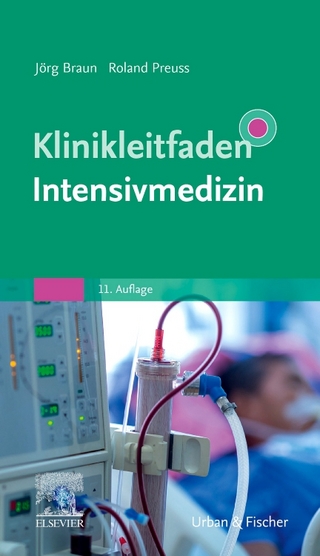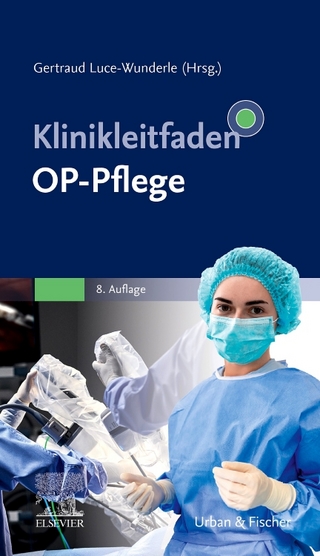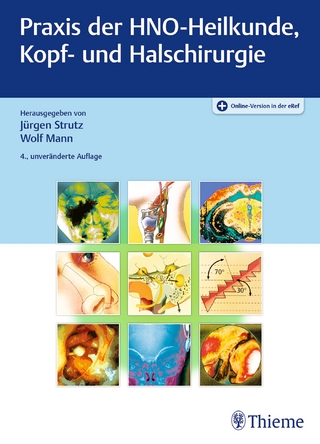Der Effekt von lokal appliziertem thrombozytenreichem Plasma, mesenchymalen Stromazellen und ihrer Kombination auf die Heilung avaskulärer Meniskusrisse sowie auf VEGF-A, PDGF-β und Faktor VI
Seiten
2022
|
1. Auflage
Mensch & Buch (Verlag)
978-3-96729-183-4 (ISBN)
Mensch & Buch (Verlag)
978-3-96729-183-4 (ISBN)
Die Versorgung traumatischer Meniskusverletzungen stellt bis heute eine Herausforderung dar. Meniskusrisse der avaskulären, zentralen Zone zeigen aufgrund ihrer schlechten Gefäßversorgung eine geringe Heilungstendenz. Die Therapie der Wahl von Meniskusrissen in der avaskulären Zone ist aktuell die partielle Meniskektomie, die jedoch das Risiko für eine Knorpelabnutzung und damit für den verfrühten Beginn einer Gonarthrose erhöht. Dieses Risiko korreliert mit der Menge an reseziertem Meniskusgewebe. Neue Behandlungsansätze zielen daher darauf ab, möglichst viel Meniskusgewebe zu erhalten und das intrinsische Reparationsvermögen des Meniskus durch heilungsfördernde Substanzen wie Thrombozyten-reiches Plasma (PrP) und mesenchymale Stromazellen (MSCs) zu verbessern. PrP wirkt sich positiv auf die Zellproliferation, die Bildung der extrazellulären Matrix und die Chemotaxis der MSCs aus. Die MSCs wirken als Reparationszellen und über die Sekretion parakrin wirkender Mediatoren. Eine wichtige Rolle bei der Angiogenese, Zellproliferation, -migration und Wundheilung spielen die Wachstumsfaktoren Vascular endothelial growth factor-A (VEGF-A) und Plateletderived growth factor beta (PDGF-β), die sowohl im PrP als auch von den MSCs exprimiert werden. Tierexperimentelle Studien am Knochen und Gelenkknorpel belegen ein additives Heilungspotential der Kombination aus PrP und MSCs. In in vitro Versuchen wirkten sich sowohl das PrP als auch MSCs positiv auf Meniskuszellen und auf die Sekretion heilungsfördernder Wachstumsfaktoren und Zytokine aus; die kombinierte Applikation von PrP und MSCs verstärkte diese Effekte. Diese Befunde wurden partiell auch in Tierversuchen für die Heilung avaskulärer Meniskusrisse bestätigt. Das Ziel der vorliegenden Studie war es, den Effekt einer Applikation von PrP und/oder MSCs auf die Heilung von Meniskusrissen in der avaskulären Zone zu untersuchen. Dabei sollte geprüft werden, wie sich die unterschiedlichen Therapien auf die makroskopische Heilung auswirken und die Anzahl VEGF-A, PDGF-β und Faktor VIII positiver Zellen als Marker der Angiogenese beeinflussen.
Hierzu wurden 30 Schafe, bei denen ein longitudinaler Riss in der avaskulären Zone des Meniscus medialis gesetzt wurde, den fünf Therapiegruppen (je n =6) (1) Naht, (2) Naht + Kollagen-Scaffold, (3) Naht + Kollagen-Scaffold + PrP, (4) Naht + Kollagen-Scaffold + MSCs und (5) Naht + Kollagen-Scaffold + PrP + MSCs zugeordnet. Die kontralateralen Menisken dienten als individuelle Referenz bei den Auswertungen. Nach acht Wochen wurden die operierten und kontralateralen Menisci mediales entnommen und makroskopisch, histologisch sowie immunhistochemisch (VEGF-A, PDGF-β und Faktor VIII) untersucht. Zusätzlich wurde die relative messenger Ribonukleinsäure-(mRNA)-Expression der Wachstumsfaktoren VEGF-A und PDGF-β mit Hilfe der quantitativen real-time Polymerase-Kettenreaktion (RT-PCR) quantifiziert. Die statistische Signifikanz der detektierten Unterschiede wurde mittels Wilcoxon-, Kruskal-Wallis- und Dunn-Test überprüft. Das Signifikanzniveau betrug p<0,05.
In keiner der Gruppen war es acht Wochen nach dem Eingriff zu einer makroskopischen Heilung des Meniskusrisses gekommen. Die relative VEGF-A-mRNA-Expression in den operierten Menisken unterschied sich in keiner der Gruppen signifikant von der Expression in den kontralateralen Menisken. Auch bestanden keine signifikanten Unterschiede zwischen den Therapiegruppen. Die relative PDGF-β-mRNA-Expression lag in der PrP- und in der MSCGruppe in den operierten Menisken hochsignifikant niedriger als in den kontralateralen Menisken. Immunhistochemisch bestanden bezüglich der Anzahl VEGF-A- und PDGF-β-positiver Zellen keine signifikanten Unterschiede zwischen den Gruppen oder zwischen den operierten und kontralateralen Menisken. Die immunhistochemische Analyse ergab aber eine signifikante Erhöhung der Anzahl Faktor VIII-positiver Zellen in der PrP+MSC-Gruppe in den operierten Menisken im Vergleich zu den kontralateralen Menisken. Dieser Unterschied war in den anderen Therapiegruppen nicht nachweisbar. In der Naht- und Carrier-Gruppe lag die Anzahl Faktor VIII-positiver Gefäße in den operierten Menisken verglichen mit den kontralateralen Menisken tendenziell niedriger.
Zusammenfassend führte weder die lokale Applikation von PrP oder MSCs allein noch die kombinierte Gabe von PrP und MSCs nach acht Wochen zu einer makroskopischen Heilung. Das Therapieregime schien die Anzahl VEGF-A- und PDGF-β-positiver Zellen nicht zu beeinflussen. Die Zunahme der Gefäße in den operierten Menisken der PrP+MSC-Gruppe deutet jedoch auf einen positiven Einfluss der Kombination aus PrP und MSCs auf die Angiogenese hin. The effect of locally applied platelet-rich plasma, mesenchymal stromal cells and their combination on meniscal healing of avascular tears as well as on VEGF-A, PDGF-β and factor VIII
The treatment of traumatic meniscal injuries is still posing a challenge today. Meniscal tears in the avascular, central zone show a poor tendency to heal due to their poor blood supply. The therapy of choice for lesions in the avascular zone so far has been the partial meniscectomy, which inevitably leads to a higher risk for gonarthrosis in the future. This risk correlates with the amount of resected tissue. New treatment approaches therefore aim to preserve as much meniscal tissue as possible and to improve the healing potential by adding healing promoting substances such as platelet-rich plasma (PrP) and mesenchymal stromal cells (MSCs). PrP has a positive effect on cell proliferation, the formation of extracellular matrix and chemotaxis of MSCs. MSCs act as reparation cells and through the secretion of paracrine mediators. The growth factors vascular endothelial growth factor-A (VEGF-A) and the platelet-derived growth factor-β (PDGF-β) expressed in PrP and in MSCs are playing a critical role in angiogenesis, cell proliferation, cell migration and wound healing. The enhanced healing potential of the combination of PrP and MSCs has already been shown in bone and cartilage repair. Animal experiments have also shown that PrP and MSCs could partially improve the repair of avascular meniscal tears. The aim of this study was to investigate the effect of PrP and/or MSCs on the healing of meniscal tears in the avascular zone. It should be examined to what extent the different therapies affect macroscopic healing and the concentrations of VEGF-A, PDGF-β and factor VIII as a marker of angiogenesis.
For this purpose, a longitudinal tear was created in the avascular zone of the medial meniscus in 30 sheep. The sheep were treated in five therapy groups (n=6 each). (1) suture, (2) suture + collagen scaffold, (3) suture + collagen scaffold + PrP, (4) suture + collagen scaffold + MSCs, and (5) suture + collagen scaffold + PrP + MSCs. The contralateral meniscus served as an individual reference for evaluating the growth factors. After eight weeks the operated and the contralateral meniscus were harvested and gross healing, histology and immunohistochemistry (VEGF-A, PDGF-β and factor VIII) were examined. The relative messenger ribonucleic acid (mRNA) expression of the growth factors VEGF-A and PDGF-β was also quantified by real time polymerase chain reaction (RT-PCR). Statistical analysis was performed using Kruskal-Wallis-, Wilcoxon and Dunn-tests. Significance level was set to p<0,05.
Gross healing of the meniscal tear was not observed in any of the groups after eight weeks. The relative VEGF-A mRNA expression did not show a significant difference between the operated menisci and contralateral menisci in any group. Furthermore, there were no significant expression differences between the therapy groups. The relative PDGF-β mRNA expression of the operated menisci was shown to be highly statistically significant downregulated in the PrP and MSC groups compared with the contralateral menisci. Immunohistochemically no significant differences between the groups or between the operated and contralateral menisci were found with regards to VEGF-A and PDGF-β. The immunohistochemical evaluation of factor VIII revealed a significant increase in the number of factor VIII positive cells in the PrP+MSC group of the operated menisci compared to the contralateral healthy ones. This difference could not be seen in any other group. Particularly in the suture and the carrier groups a tendency to a lower number of factor VIII positive cells was observed in the operated compared to the contralateral menisci.
Neither the sole nor the combined application of PrP and MSCs led to gross healing after eight weeks. The type of therapy does not seem to have had any influence on the presence of the growth factors VEGF-A and PDGF-β. However, the increase in blood vessels in the PrP+MSC group suggests a positive influence of the combination of PrP and MSCs on angiogenesis.
Hierzu wurden 30 Schafe, bei denen ein longitudinaler Riss in der avaskulären Zone des Meniscus medialis gesetzt wurde, den fünf Therapiegruppen (je n =6) (1) Naht, (2) Naht + Kollagen-Scaffold, (3) Naht + Kollagen-Scaffold + PrP, (4) Naht + Kollagen-Scaffold + MSCs und (5) Naht + Kollagen-Scaffold + PrP + MSCs zugeordnet. Die kontralateralen Menisken dienten als individuelle Referenz bei den Auswertungen. Nach acht Wochen wurden die operierten und kontralateralen Menisci mediales entnommen und makroskopisch, histologisch sowie immunhistochemisch (VEGF-A, PDGF-β und Faktor VIII) untersucht. Zusätzlich wurde die relative messenger Ribonukleinsäure-(mRNA)-Expression der Wachstumsfaktoren VEGF-A und PDGF-β mit Hilfe der quantitativen real-time Polymerase-Kettenreaktion (RT-PCR) quantifiziert. Die statistische Signifikanz der detektierten Unterschiede wurde mittels Wilcoxon-, Kruskal-Wallis- und Dunn-Test überprüft. Das Signifikanzniveau betrug p<0,05.
In keiner der Gruppen war es acht Wochen nach dem Eingriff zu einer makroskopischen Heilung des Meniskusrisses gekommen. Die relative VEGF-A-mRNA-Expression in den operierten Menisken unterschied sich in keiner der Gruppen signifikant von der Expression in den kontralateralen Menisken. Auch bestanden keine signifikanten Unterschiede zwischen den Therapiegruppen. Die relative PDGF-β-mRNA-Expression lag in der PrP- und in der MSCGruppe in den operierten Menisken hochsignifikant niedriger als in den kontralateralen Menisken. Immunhistochemisch bestanden bezüglich der Anzahl VEGF-A- und PDGF-β-positiver Zellen keine signifikanten Unterschiede zwischen den Gruppen oder zwischen den operierten und kontralateralen Menisken. Die immunhistochemische Analyse ergab aber eine signifikante Erhöhung der Anzahl Faktor VIII-positiver Zellen in der PrP+MSC-Gruppe in den operierten Menisken im Vergleich zu den kontralateralen Menisken. Dieser Unterschied war in den anderen Therapiegruppen nicht nachweisbar. In der Naht- und Carrier-Gruppe lag die Anzahl Faktor VIII-positiver Gefäße in den operierten Menisken verglichen mit den kontralateralen Menisken tendenziell niedriger.
Zusammenfassend führte weder die lokale Applikation von PrP oder MSCs allein noch die kombinierte Gabe von PrP und MSCs nach acht Wochen zu einer makroskopischen Heilung. Das Therapieregime schien die Anzahl VEGF-A- und PDGF-β-positiver Zellen nicht zu beeinflussen. Die Zunahme der Gefäße in den operierten Menisken der PrP+MSC-Gruppe deutet jedoch auf einen positiven Einfluss der Kombination aus PrP und MSCs auf die Angiogenese hin. The effect of locally applied platelet-rich plasma, mesenchymal stromal cells and their combination on meniscal healing of avascular tears as well as on VEGF-A, PDGF-β and factor VIII
The treatment of traumatic meniscal injuries is still posing a challenge today. Meniscal tears in the avascular, central zone show a poor tendency to heal due to their poor blood supply. The therapy of choice for lesions in the avascular zone so far has been the partial meniscectomy, which inevitably leads to a higher risk for gonarthrosis in the future. This risk correlates with the amount of resected tissue. New treatment approaches therefore aim to preserve as much meniscal tissue as possible and to improve the healing potential by adding healing promoting substances such as platelet-rich plasma (PrP) and mesenchymal stromal cells (MSCs). PrP has a positive effect on cell proliferation, the formation of extracellular matrix and chemotaxis of MSCs. MSCs act as reparation cells and through the secretion of paracrine mediators. The growth factors vascular endothelial growth factor-A (VEGF-A) and the platelet-derived growth factor-β (PDGF-β) expressed in PrP and in MSCs are playing a critical role in angiogenesis, cell proliferation, cell migration and wound healing. The enhanced healing potential of the combination of PrP and MSCs has already been shown in bone and cartilage repair. Animal experiments have also shown that PrP and MSCs could partially improve the repair of avascular meniscal tears. The aim of this study was to investigate the effect of PrP and/or MSCs on the healing of meniscal tears in the avascular zone. It should be examined to what extent the different therapies affect macroscopic healing and the concentrations of VEGF-A, PDGF-β and factor VIII as a marker of angiogenesis.
For this purpose, a longitudinal tear was created in the avascular zone of the medial meniscus in 30 sheep. The sheep were treated in five therapy groups (n=6 each). (1) suture, (2) suture + collagen scaffold, (3) suture + collagen scaffold + PrP, (4) suture + collagen scaffold + MSCs, and (5) suture + collagen scaffold + PrP + MSCs. The contralateral meniscus served as an individual reference for evaluating the growth factors. After eight weeks the operated and the contralateral meniscus were harvested and gross healing, histology and immunohistochemistry (VEGF-A, PDGF-β and factor VIII) were examined. The relative messenger ribonucleic acid (mRNA) expression of the growth factors VEGF-A and PDGF-β was also quantified by real time polymerase chain reaction (RT-PCR). Statistical analysis was performed using Kruskal-Wallis-, Wilcoxon and Dunn-tests. Significance level was set to p<0,05.
Gross healing of the meniscal tear was not observed in any of the groups after eight weeks. The relative VEGF-A mRNA expression did not show a significant difference between the operated menisci and contralateral menisci in any group. Furthermore, there were no significant expression differences between the therapy groups. The relative PDGF-β mRNA expression of the operated menisci was shown to be highly statistically significant downregulated in the PrP and MSC groups compared with the contralateral menisci. Immunohistochemically no significant differences between the groups or between the operated and contralateral menisci were found with regards to VEGF-A and PDGF-β. The immunohistochemical evaluation of factor VIII revealed a significant increase in the number of factor VIII positive cells in the PrP+MSC group of the operated menisci compared to the contralateral healthy ones. This difference could not be seen in any other group. Particularly in the suture and the carrier groups a tendency to a lower number of factor VIII positive cells was observed in the operated compared to the contralateral menisci.
Neither the sole nor the combined application of PrP and MSCs led to gross healing after eight weeks. The type of therapy does not seem to have had any influence on the presence of the growth factors VEGF-A and PDGF-β. However, the increase in blood vessels in the PrP+MSC group suggests a positive influence of the combination of PrP and MSCs on angiogenesis.
| Erscheinungsdatum | 10.04.2024 |
|---|---|
| Verlagsort | Berlin |
| Sprache | deutsch |
| Maße | 148 x 210 mm |
| Gewicht | 320 g |
| Themenwelt | Medizin / Pharmazie ► Medizinische Fachgebiete ► Chirurgie |
| Veterinärmedizin ► Vorklinik | |
| Schlagworte | aus Blutplättchen gewonnener Wachstumsfaktor (MeSH) • blood plasma • Blutplasma • Factor VIII • Faktor VIII • Gewebereparatur • Healing • Heilung • Injection • Injektion • Meniscus (MeSH) • Meniskus (MeSH) • platelet-derived growth factor (MeSH) • Ruptur • Rupture • Therapie • therapy • Thrombocytes • Thrombozyten • Tissue repair • vascular endothelial growth factor a (MeSH) • vaskulärer endothelialer Wachstumsfaktor (MeSH) • wounds • Wunden |
| ISBN-10 | 3-96729-183-9 / 3967291839 |
| ISBN-13 | 978-3-96729-183-4 / 9783967291834 |
| Zustand | Neuware |
| Haben Sie eine Frage zum Produkt? |
Mehr entdecken
aus dem Bereich
aus dem Bereich
Buch | Softcover (2021)
Urban & Fischer in Elsevier (Verlag)
54,00 €




